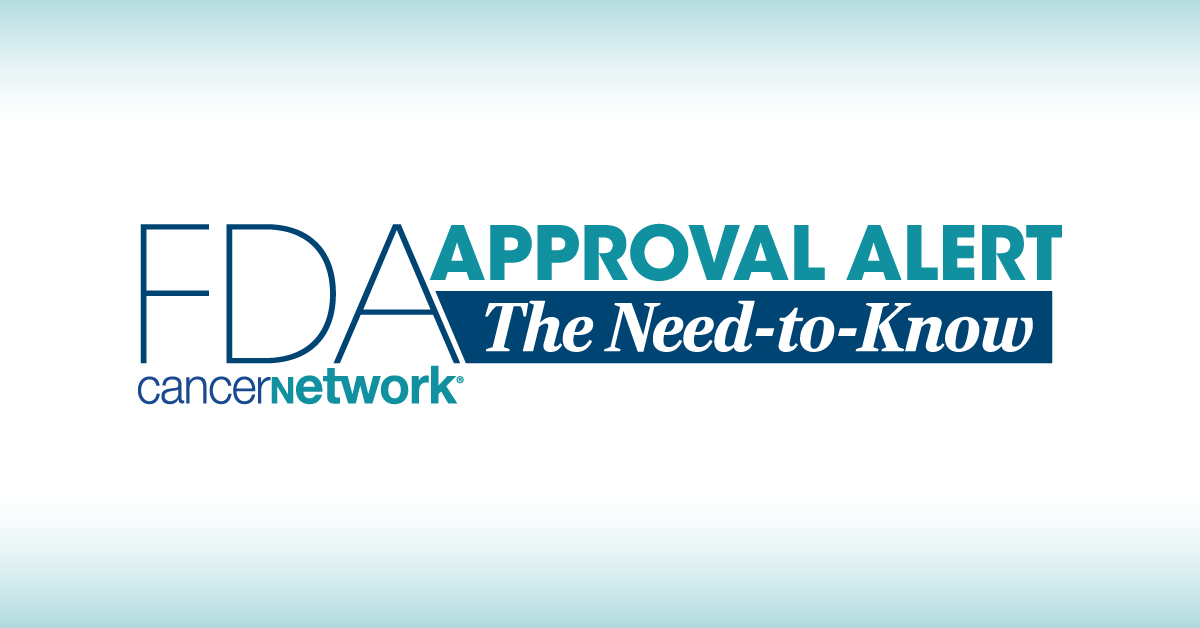FDA Approves Pembrolizumab/Chemo in First-Line Gastric/GEJ Adenocarcinoma
Data from the phase 3 KEYNOTE-811 trial supported the FDA approval of this pembrolizumab combination in locally advanced unresectable or metastatic, PD-L1–positive, HER2-positive gastric or GEJ adenocarcinoma.
Data from the phase 3 KEYNOTE-811 trial (NCT03615326) supported the FDA approval of this pembrolizumab combination in locally advanced unresectable or metastatic, PD-L1–positive HER2-positive gastric or gastroesophageal junction adenocarcinoma.

The FDA has approved pembrolizumab (Keytruda) in combination with trastuzumab (Herceptin) and fluoropyrimidine- and platinum-containing chemotherapy in the first-line treatment of adult patients with locally advanced unresectable or metastatic HER2-positive gastric or gastroesophageal junction adenocarcinoma with a PD-L1 combined positive score (CPS) of 1 or higher, according to a press release from the FDA.1
Supporting results come from the randomized, double-blind phase 3 KEYNOTE-811 trial (NCT03615326) that evaluated either pembrolizumab or placebo plus trastuzumab, fluoropyrimidine-, and platinum-containing chemotherapy.
In patients with a PD-L1 CPS of 1 or higher, the median progression-free survival was 10.9 months (95% CI, 8.5-12.5) in the pembrolizumab arm and 7.3 months (95% CI, 6.8-8.4) in the placebo arm (HR, 0.72; 95% CI, 0.60-0.87); median overall survival was 20.1 months (95% CI, 17.9-22.9) and 15.7 months (95% CI. 13.5-18.5), respectively (HR, 0.79; 95% CI, 0.66-0.95).1 The overall response rate was 73% (95% CI, 68%-78%) in the pembrolizumab arm and 58% (95% CI, 53%-64%) in the placebo arm; the median duration of response was 11.3 months (95% CI, 9.9-13.7) and 9.6 months (95% CI, 7.1-11.2), respectively.
The trial enrolled a total of 698 patients who were randomly assigned, in a 1:1 ratio, to receive either pembrolizumab or placebo with chemotherapy; 594 patients had a PD-L1 CPS of 1 or greater.
The recommended dose is 200 mg of pembrolizumab every 3 weeks or 400 mg every 6 weeks in combination with trastuzumab and chemotherapy.
Regarding safety, the adverse reaction profile in patients who received pembrolizumab was consistent with the agent's previously known safety profile.
Previously, in May 2021, pembrolizumab received accelerated approval in this indication.2
References
- FDA approves pembrolizumab for HER2 positive gastric or gastroesophageal junction adenocarcinoma expressing PD-L1 (CPS ≥1). News release. FDA. March 19, 2025. Accessed March 19, 2025. https://tinyurl.com/52erabzr
- FDA approves Merck’s KEYTRUDA (pembrolizumab) combined with trastuzumab and chemotherapy as first-line treatment in locally advanced unresectable or metastatic HER2-positive gastric or gastroesophageal junction adenocarcinoma. News release. Merck. May 5, 2021. Accessed March 19, 2025. https://bit.ly/2SjmdOj